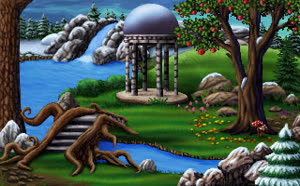

Some participants will enjoy the flexibility it presents others will find the lack of a clear path disturbing. This is completely new way to run D&D Encounters. Groups can play at their own pace doing as much or as little as they want week to week. That’s right, the players will find their characters thrown into events already in progress and be given complete freedom to insert themselves as they see fit.

This is going to come as a shock, but there are no set encounters broken down week by week. Legacy of the Crystal Shard is presented as edition-neutral and can be run using 3.5e, 4e, or D&D Next mechanics. Although it’s not necessary for the DM or any of the players to have read these books, if they have it will give them with additional insight this season (so read them if you haven’t because they’re fantastic!). Salvatore’s original Icewind Dale trilogy. This adventure builds on the events of R.A. It’s the second of fives D&D Encounters adventures that tie in to The Sundering, the first being last season’s Murder in Baldur’s Gate. The adventure itself is part of The Sundering, the ongoing series of stories happening throughout the Forgotten Realms. My initial impression is that this will either be the very best or very worst season of D&D Encounters there will be no middle ground. Although it does bear some similarities to previous season and holds true to some of the conventions you’ve come to expect from the D&D Encounters program, it takes a huge leap into new territory as we’ll describe below.

Legacy of the Crystal Shard is different than any other D&D Encounters adventure we’ve seen so far – and I mean that in a good way.


 0 kommentar(er)
0 kommentar(er)
